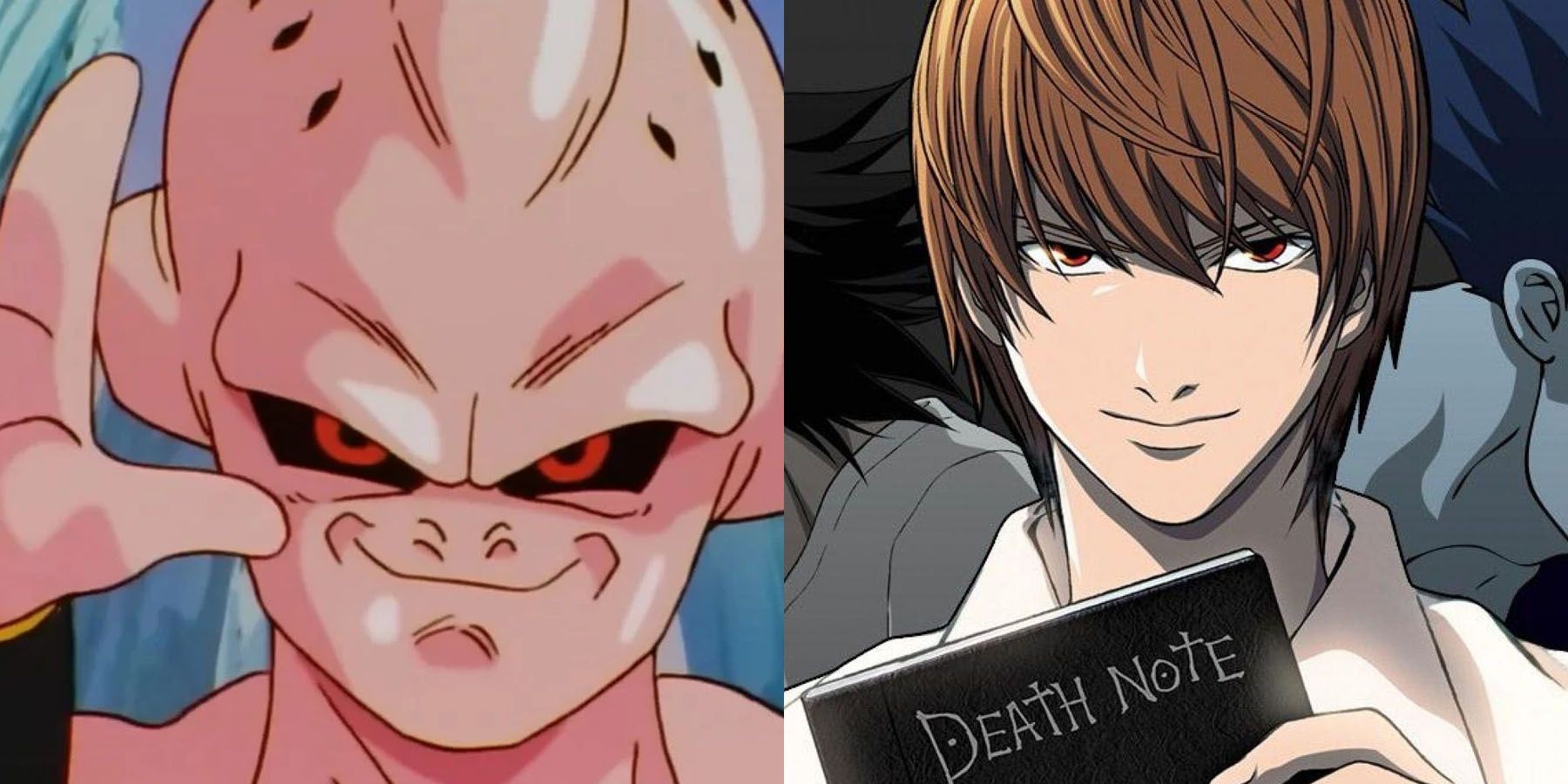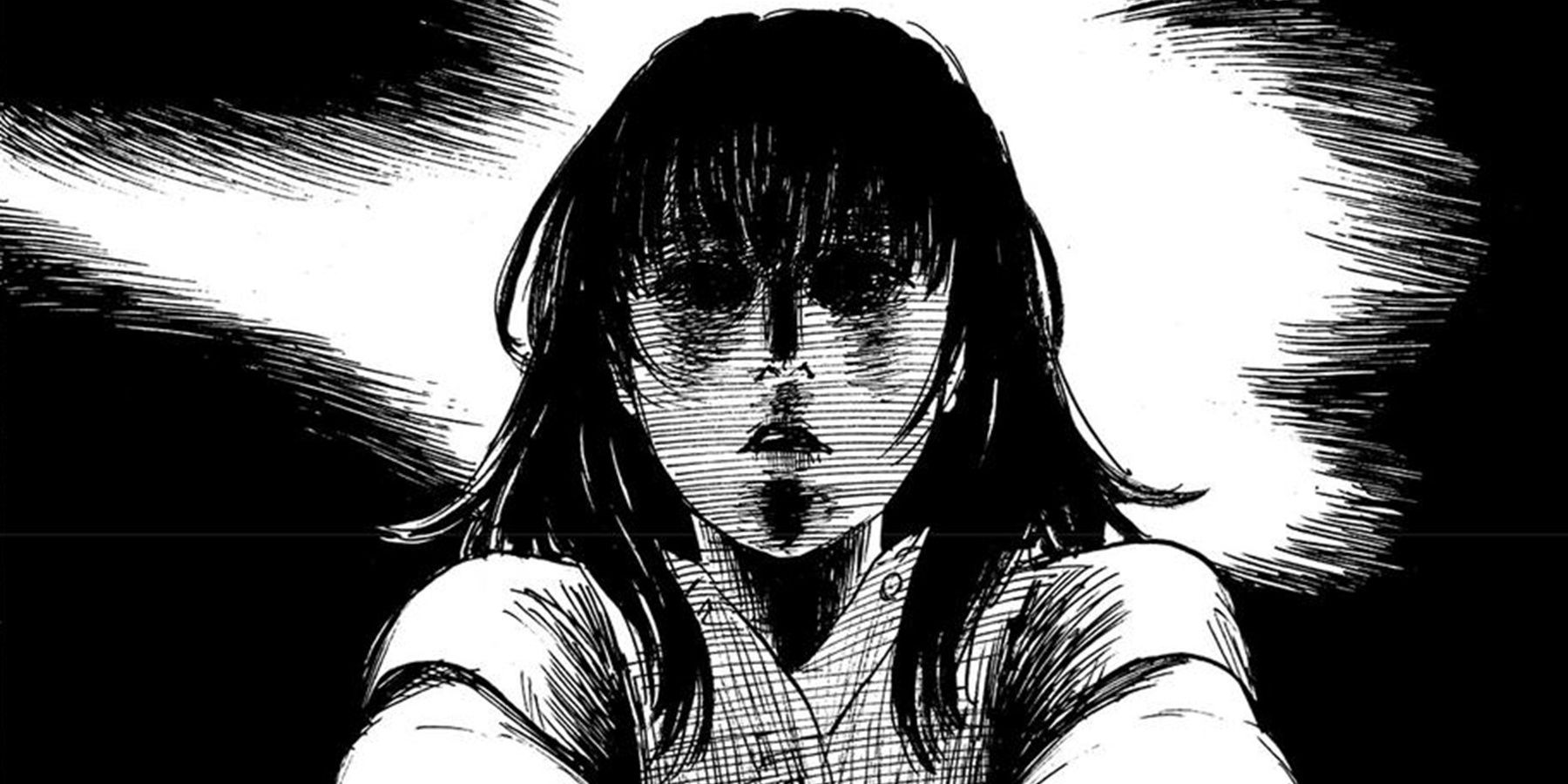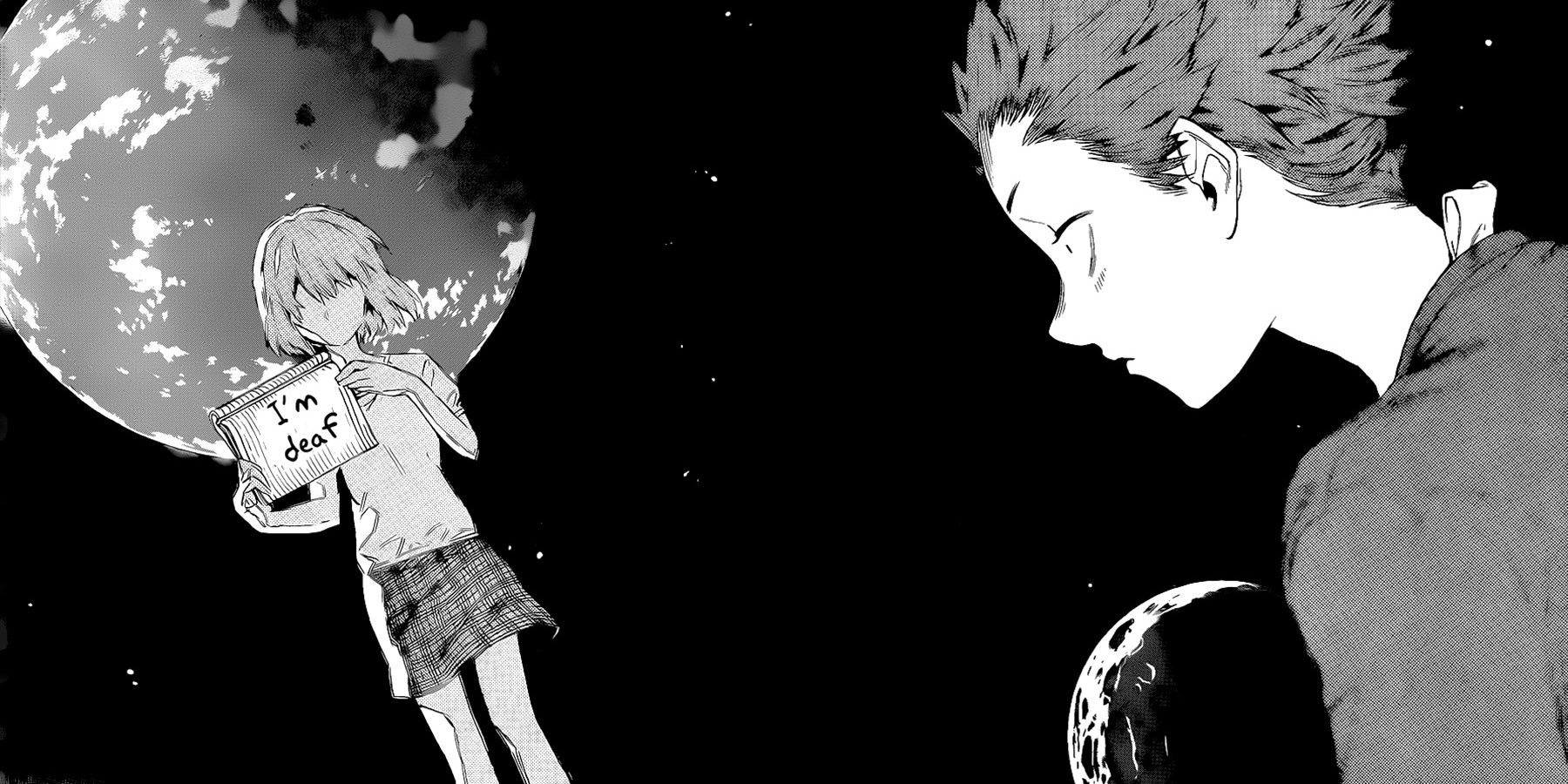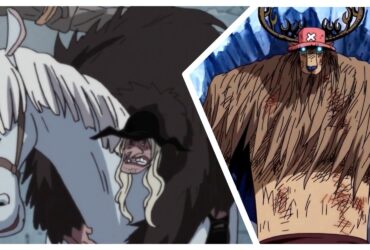One of the more fascinating fields of science is psychology. The human mind and how it works offer plenty of insight, from how religious and superstitious behavior forms, to the nature of addiction and how to overcome it. It can also provide a look into what compels people to do certain things, whether they’re deemed good or bad.

Related
31 Most Ruthless Anime Villains
The following infamous anime villains take their ruthlessness to the next level.
People readily accept altruistic behavior because there’s an obvious benefit to it (improved relations with peers, respect, etc.). But what makes a person a villain? How did they get that way? Do they consider themselves bad, and if so, what do they do to change that? These questions have been asked in fiction too, with these manga offering their takes on the psychology of villains.
10 Multiple Personality Detective Psycho
Dissociative Detective Gradually Uncovers The Cause of Their Condition
- Creators: Eiji Otsuka (story), Shou Tajima.
- 24 Volumes, 155 Chapters.
- Available in English via Dark Horse Comics.
Multiple personality disorder is a popular trope in fiction, though it rarely resembles its real-life equivalent, dissociative personality disorder, where the patient develops a second or more personalities in response to extreme trauma. Multiple Personality Detective Psycho has the trauma, then gets more fanciful from there. As in response to his girlfriend’s torture and murder, Detective Yosuke Kobayashi developed his murderous ‘Shinji Nishizono’ persona, who gained bloody vengeance on the killer.
After being imprisoned and released for the crime, he sets up a private agency where he and his cooler-headed ‘Kazuhiko Amamiya’ identity investigate a startling rise in serial killers who all have similar traits, and point to a wider conspiracy. MPD Psycho is less about DPD and more about the nature of personality and how it relates to one’s identity. As Yosuke is simultaneously the protagonist and antagonist, and neither of them at the same time. Does that still make him culpable for their crimes? The manga gradually unfolds this conundrum as the truth is revealed.
9 Tomodachi Game
Student Falls Back into Bad Habits When He Faces Pressure
- Creators: Mikoto Yamaguchi (story), Yuuki Satou (art).
- 26 Volumes, 130 Chapters.
- Available in English via K Manga.
Is it right to use despicable behavior to fight against it? Can a person truly leave it behind and go straight? Tomodachi Game asks these questions and more, as Yuichi and his friends are forced to prove their loyalty to each other in a series of tests in order to clear one of their exorbitant debts. Yuichi says he values his friends, as they helped him get through high school. However, as the game goes on, he becomes more cold, manipulative, and ruthless.
His other friends have their own dark secrets too, and instead of facing up to them honestly, they all try to cover them up in different ways. But Yuichi’s past is darker than most, and he goes to darker lengths to complete the different games the mysterious ‘Manabu-kun’ offers him. It’s all too easy for someone to backslide when the pressure is on, and without coming to terms with his past, the consequences hit Yuichi hard.
8 Funouhan
Amoral Assassin Acts as a Tool for Clients In Return for Seeing Their Downfall
- Creators: Arata Miyatsuki (story), Yuuya Kanzaki (art).
- 12 Volumes, 83 Chapters.
- Fan Translations only. Available in French via Delcourt, and Brazilian Portuguese via Panini Comics.
Anthology series often have multiple stories about how people end up doing evil deeds, and how they deal with the consequences. The Twilight Zone, Tales of the Unexpected, Hell Girl, The Black/Laughing Salesman and more have many episodes showing whether the villain gets away with their crimes, or faces karma within a few minutes. In manga, one of the more underrated examples is Funouhan, aka Impossibility Defense. It follows Tadashi Usobuki, a hitman who’ll take out his targets for free and without leaving evidence.

Related
8 Forgotten Anthology Horror Shows (And Where To Watch Them)
These eight forgotten anthology horror shows are certainly worth your time.
He manages this without using guns, knives, poison, or any other direct method. Instead, he’ll manipulate them into taking themselves out, be it by hypnotizing them directly, or changing their circumstances until they’re gaslit into taking their own lives. He does it for free because he finds “the folly of mankind” to be payment enough, as his clients often end up worse off than when they hired him. Tadashi is no angel, but who’s worse: the killer or the person asking them to kill? In Funouhan, it’s not an easy question to answer.
7 Aku no Kyouten
Japanese Psycho
- Creators: Yusuke Kishi (original novel), Eiji Karasuyama (art).
- 9 Volumes, 36 Chapters.
- Fan Translations only.
One of the best ways to demonstrate how villainy works is by telling the story from the villain’s perspective, like in Aku no Kyouten. It follows Seiji Hasumi, who seems like the ideal teacher. As far as the students know, he’s good inside and out, as he’s always willing to help them with anything they need. But looks can be deceiving, as his charisma hides a high-functioning psychopath who aims to turn Machida High into his own personal kingdom.
Horror movies paint psychopaths as mad killers, but that’s not quite accurate. Psychopaths are defined by their impaired empathy and remorse, with keen smarts to make up for it, alongside a cool collar and a big ego. Michael Myers, Jason, Freddy, etc., are psychopathic because they can kill people without worrying about it. So, when Hasumi has some pesky students who threaten to spoil his plans, he’s more than happy to take them out of the equation permanently.
6 Blood on the Tracks
Mother Abuses Her Child for Emotional Satisfaction
- Creator: Shuzo Oshimi.
- 17 Volumes, 153 Chapters.
- Available in English via Kodansha Comics USA.
It takes more than a mental condition to turn someone into a villain. For many, it’s something they have to overcome with extensive therapy, which isn’t always available. Even getting diagnosed can be tricky, which might be why few people were concerned about Seiko in Blood on the Tracks until it was too late. On the outside, she seems like a doting mother to her son, Seiichi. But inside, she’s a sociopath who controls her son’s life through blackmail, stalking, and overstepping boundaries in order to feel fulfilled.
She’ll seem like she loves her son, and she’ll say so, but it’s all so she can get what she wants. Most parents would go to any length to help their kids, but she makes Seiichi go to lengths to protect her, while willingly making his life worse. He’s the one conflicted over whether to reveal she was the one who tried to kill his cousin, Shige, not her. It makes for a chilling tale that’ll leave readers uneasy for much longer than the bloodiest horror strips.
5 Berserk
The Ends Justify the Means, But Can’t Fill an Empty Heart
- Creator: Kentaro Miura. Continued by Studio Gaga and Kouji Mori.
- 42+ Volumes, 391+ Chapters.
- Available in English via Dark Horse Comics.
A wise man, be it Buddha or Sideshow Bob, said that life was suffering and the cause of suffering is desire. It often forms the root of ambition, driving people to do extraordinary things. But some ambitions are crueler and more cunning than others, where using and abusing one’s peers can be fair game if they get results. One of the best examples in manga is Griffith, the main villain in Berserk. He wasn’t shy about his intentions to build his own kingdom, nor the lengths that he’d go to in order to achieve that.

Related
Berserk: 8 Most Evil Characters In The Series
Berserk’s brutal world is filled with horrible, evil characters. The following are the worst in the iconic anime series.
But he has conflicting feelings about the people he’d use in his plans. Guts is simultaneously another mercenary for him to use, and a close friend. So, when Guts managed to gain his freedom by beating him in a duel, it rocked his world. He lost his best fighter, his friend, and his image as being the best warrior in an instant. It drove him to self-destruct, and to make the ultimate sacrifice: giving up the lives of his band in order to become a demon and eventually gain the kingdom he dreamed of. Yet he still misses what he gave up in pursuit of his ambition.
4 Death Note
The Deadly Combination of Egotism and Power over Life and Death
- Creators: Tsugumi Ohba (story), Takeshi Obata (art).
- 12 Volumes, 108 Chapters.
- Available in English via Viz Media.
In fiction, people say the best villains are the ones who believe their actions are right, no matter how twisted they are. They also say that absolute power corrupts absolutely. Death Note offers a good example of both traits, as without the infamous notebook, Light Yagami would just be another high school student. Albeit one likely to get into Ayn Rand, objectivism, and/or 4chan. With the book, he thinks he could become a god and usher in a new world where murderers, rapists and the like receive their long overdue sentencing.
But he isn’t a god. He’s a teenager with a superiority complex that’s been made worse because he found a shinigami’s notebook. But he’s so devoted to his cause, and so wrapped up in his godly Kira identity, that he sees anyone trying to stop him as culpable as the worst criminals. After all, they’re trying to expose him and stop him from trying to make a better world. By taking away his delusions of grandeur and his book, he thinks he has little to offer, so they end up on his long list of victims.
3 Monster
Getting Twisted by Nature and Nurture Can Produce The Most Volatile Villains
- Creator: Naoki Urasawa.
- 18 Volumes, 162 Chapters.
- Available in English via Viz Media.
So far, villains have ranged from people trying to repress their darkest urges (Tomodachi Game), to people who give into them wholly in the pursuit of power (Berserk, Death Note). Some think what they’re doing is for the greater good, while others don’t care whether it’s good or bad, so long as they’re satisfied, like Monster’s Johan Liebert. He’s a psychopath like Hasumi, only he goes further, as he believes all life is insignificant because all lifeforms die eventually anyway.
He acts in contrast to the protagonist, Dr Tenma, who does see value in life, and actually saved Johan’s life as a child. It’s an alien concept to him, so he does all he can to prove Tenma’s ideals wrong, killing more people in cruel and calculated ways. Part of his twisted views come from his upbringing, as he was raised in an orphanage as a test subject. However, Hartmann, its former director, doubts they alone could’ve produced such a perfect killer. It’s likely their regime made Johan’s underlying conditions worse until he became a true monster.
2 A Silent Voice
Villainous Behavior Can Be Overcome
- Creator: Yoshitoki Ooima.
- 7 Volumes, 64 Chapters.
- Available in English via Kodansha Comics USA.
In more hard-boiled stories, karma strikes back in the form of a swift and/or brutal punishment, be it Blood on the Tracks’ Seiko getting abused back in her old age, or Death Note’s Light discovering he was a walking punchline all along. But it can also come in more enlightening ways, like in A Silent Voice, where Shoya used to join his friends in bullying Shoko, a deaf transfer student. Then, when the principal found out, he was the only one singled out as the source of her misery.

Related
A Silent Voice: The Biggest Differences Between the Anime and the Manga
There are plenty of differences between the original and the film adaptation, but here’s what fans might’ve missed from the original.
Shoko tried to help, but he acted out and fought her off, making things worse for him. After that, he was sent to another school, where his reputation as a bully preceded him and left him as a social outcast. Older and depressed, he seeks to make amends with Shoko before ending his life. But just as he was punished by fate for bullying, he’s rewarded for trying to make amends, as he learned what it was like to be on the receiving end. Villains don’t need to be killed or ruined to prove a moral point. They can grow better as people too.
1 Our Happy Time
It Takes More Than Crime to Be Evil
- Creators: Gong Ji-Young (original novel), Sumomo Yumeka (art).
- 1 Volume, 8 Chapters.
- Fan Translations only.
Our Happy Time is another unlikely choice, as it isn’t a psychological crime or horror story. It’s an adaptation of a Korean novel by Gong Ji-Young, which sees a suicidal woman called Juri find common ground with Yuu, a suicidal convict. He’s been put on death row for murdering 3 people, and has tried to commit suicide multiple times behind bars. Juri’s aunt and others have tried to get through to him, but to no avail. At first, one would think he should kill himself, since the state is going to do it anyway.
But the manga aims to show that criminals deserve empathy, as it takes more than committing even the worst crimes to be evil. Just as it takes more to be good than abiding by the law. Left to fend for himself on the streets, Yuu only intended to kill one person, a violent gang leader who paid people to hurt others. But he accidentally caused the death of a mother and her daughter in the process. He finds common ground with Juri, who was traumatized by people who got away with their crimes, and together they find solace in their remaining time together.

More
The Best Anime Villains Of All Time
Great villains are what make an anime series interesting, and these anime villains are undoubtedly the best of all time.






















Leave a Reply